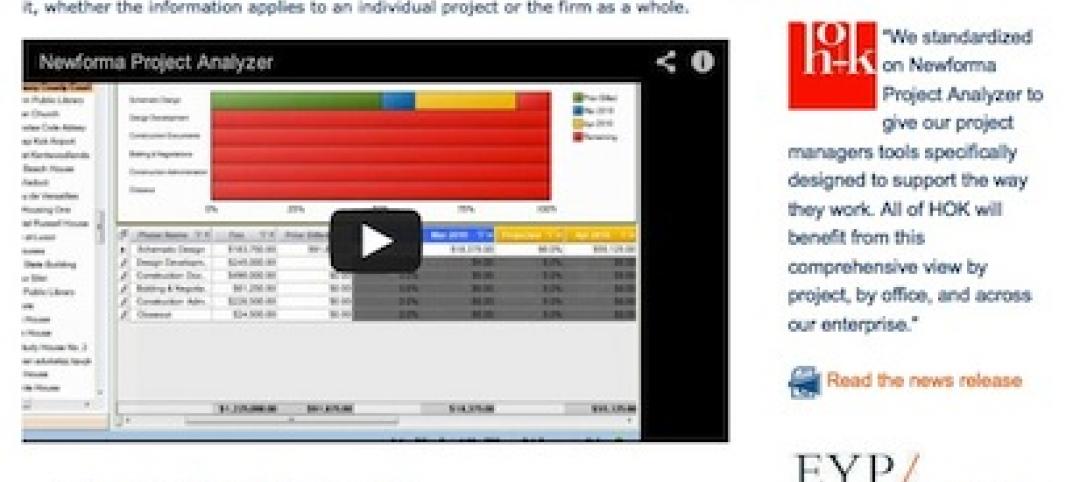During the past half-decade, a number of AEC technologies have sprung from a common, and perhaps unexpected, source: video games. From urban planning tools to the integration of VR, the well of video game inspiration springs eternal in the AEC world.
The newest tool to find a home in the kits of architects and designers has spent the last couple of decades being perfected by the video game industry: real-time rendering.
Real-time rendering, as its name would suggest, is focused on producing, altering, and analyzing images in real time. In the video game world, real-time rendering can be seen during game play; a character is controlled and the surrounding environment alters accordingly to simulate movement. A cutscene in a video game—when a player has no control—represents a more traditional, pre-rendered approach that is common in the AEC industry.
For AEC professionals, choosing real-time rendering techniques over more traditional rendering can mean the difference between making a change that is reflected instantaneously and making a change that may take a week or longer to be reflected in the project renderings. This swift turnaround can help firms save time and money and create a more streamlined experience for clients.
There are several software options: Enscape, eyecad VR, FluidRay RT, and Lumion. These tools work with programs such as SketchUp, Revit, and Rhino to enable real-time rendering and eliminate exporting modeling to another program.
With these tools, architects can make adjustments, large and small, to building plans. A designer using SketchUp with the Lumion Live Sync plug in, for example, can make necessary changes in the SketchUp model and see them reflected immediately in Lumion.
Users can move objects around, add different surface textures (e.g., polished, chrome, fabric), have lights or electronic screens emit illumination, and change sun settings. Realistic water, grass, time of day, and shadow effects can also be added and changed. In many cases, full visualizations can be created from an architectural model in 15 minutes.
Display settings can be changed for presentation purposes. Enscape’s Light View shows how much lux falls onto each surface in real time as the sun changes position throughout the day. If the date, time, and location have been selected, the sun angle will be displayed correctly.
 A before and after depicting Enscape’s real-time rendering software.
A before and after depicting Enscape’s real-time rendering software.
The single greatest benefit real-time rendering provides is better communication between an architect and a client. “It promotes active participation in design presentations and allows us to be more flexible,” says Phil Kolbo, LEED AP, Senior Architect and Associate Principal with Populous.
Traditional rendering methods require the design to be developed beforehand, so any requested changes need to be noted and executed at a later date. This means if a design team wants to present a client with three design options, four material choices, and six views, the presentation would require 72 different renderings. With real-time rendering, the design options can be changed in real time and the material options can be toggled on/off in seconds.
Orlando City Stadium, designed by Populous and opened in early 2017, is the result of this new real-time rendering approach. The 25,500-seat stadium’s seating bowl was designed in real time in front of the client group. The design team was able to test a variety of ideas as quickly as they or the client group could think of them. “As a result, the clients came to understand the site and stadium design limitations as much as we did, and we left the meeting with a greater level of trust from the clients,” says Kolbo.

Populous utilized real-time rendering tools to enhance client collaboration efforts on the 25,500-seat Orlando City Stadium.
Real-time peccadilloes
Just about any computer has the power to display traditionally rendered images without issue. But real-time rendering requires more powerful hardware, especially in the graphics department.
“Designers have to create models efficiently in order to achieve the best visual performance,” Kolbo says. “Strategies like advanced texturing and light baking can give models a life-like level of quality while still allowing them to run at a real-time level.”
Another consideration is allowing extra time for design and development. Because a client can request to see any part of a model at any time due to real-time rendering’s flexibility, all parts of the model need to be of high quality and ready to view.
“The technology behind real-time rendering software is constantly improving, but it currently calls for designers to make a choice between easy-to-use and non-customizable solutions or ones that are more complex and versatile,” says Kolbo. “Merging these points will unlock a lot more potential in the future.”
Real-time rendering still presents some trade offs when compared to traditional rendering. But as the technology advances, the benefits will begin to outweigh the limitations.
Related Stories
| Mar 26, 2013
Will Google Glass revolutionize the construction process?
An Australian architect is exploring the benefits of augmented reality in the design and construction process.
| Mar 6, 2013
Hospital project pioneers BIM/VDC-based integrated project delivery
The Marlborough (Mass.) Hospital Cancer Pavilion is one of the first healthcare projects to use BIM/VDC-based integrated project delivery.
| Feb 25, 2013
AISC seeks proposals for development of BIM best practices guide
The American Institute of Steel Construction seeks assistance from BIM users in identifying and documenting best practices to facilitate the long-term standardization of BIM in structural steel construction.
| Feb 8, 2013
AAMA and WDMA release updated industry review, trends forecast
Windows and doors report predicts slow growth in commercial construction; analyzes historic data from 2006-11 and forecast data through 2015.
| Jan 31, 2013
Newforma releases next generation Project Analyzer software
Newforma, a project information management software company, announced that a new version of its design project management software, Newforma Project Analyzer, has been validated by leading architecture and engineering firms and is now commercially available.
| Jan 25, 2013
Applied Software Earns Autodesk MEP Systems Engineering Specialization Designation
Designation underscores firm’s success in supporting and educating customers in MEP design and BIM.
| Jan 9, 2013
Panasonic and Bluebeam preview new architect app at CES 2013
Panasonic and Bluebeam Software collaborate to develop and introduce the 4K tablet and software to the design and construction industry.
| Jan 3, 2013
Top BIM/VDC articles of 2011-2012
A compendium of BD+Cs top building information modeling and virtual design + construction articles from 2011-12.
| Jan 2, 2013
Global data center market to ‘slow’ to 14.3% this year
Total global investment in data centers is expected to slow down somewhat this year but still increase at a respectable 14.3%, according to DCD Intelligence.

















